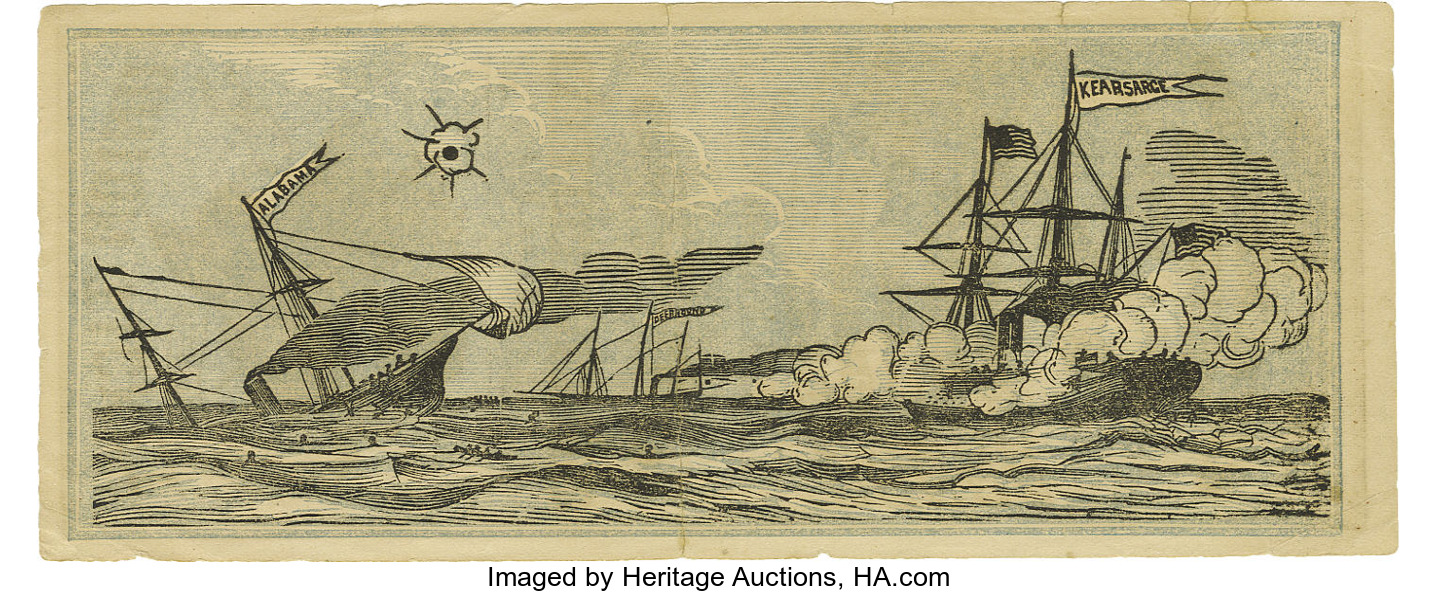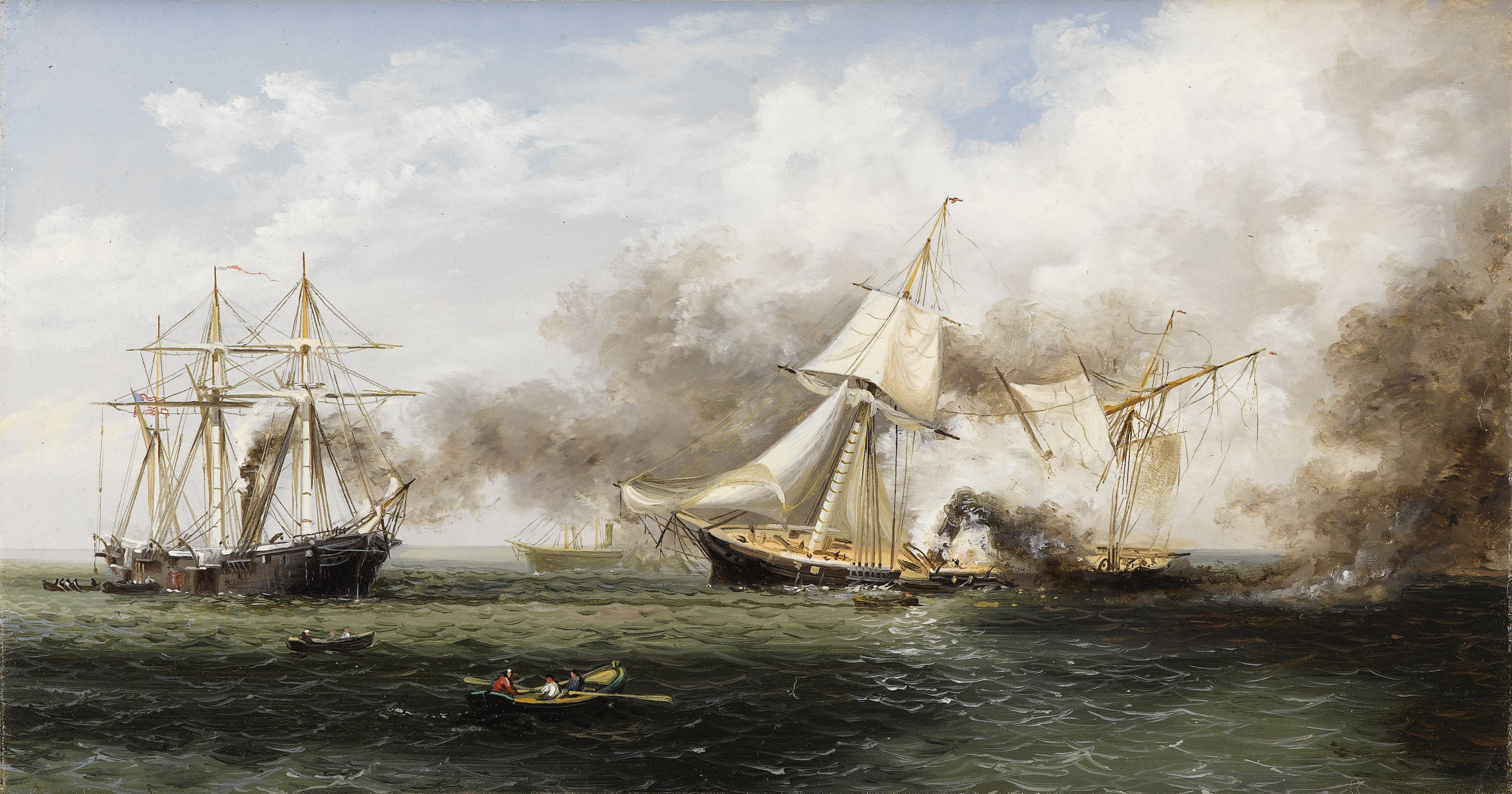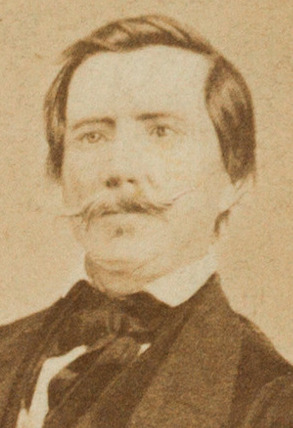
By Jim O’Neal
On Sunday, June 19, 1864, in the English Channel off Cherbourg, France, one turbulent hour brought to a climax the worldwide struggle for sea power between the North and South. Within sight of the French cliffs, lined with hundreds of people who came to see the announced spectacle of duel, were the USS Kearsarge and the Confederate warship the CSS Alabama.
French spectators munched from food baskets as the drama unfolded.
These ships, so far from home, appeared to be twins as far as the landsman could see. However, major differences in guns, crews, armor and ammunition could not be seen from shore. The Kearsarge’s 11-inch guns outmatched those of her foe. Her sides were sheathed in metal chains – covered with boards. She had been in dock for repairs the past three months, engines carefully tuned and both powder and shot in excellent condition.
By coincidence, the two captains, Raphael Semmes of the Alabama and John Winslow of the Kearsarge, were longtime friends as messmates, roommates and shipmates in the pre-war Navy – and both were Southerners. As they maneuvered their ships into position, a French warship played Confederate music as the Alabama steamed out of harbor.
The Alabama had long been on her way to this historic destiny.
Built in Liverpool, England, under subterfuge, christened anonymously as Erica and variously known as “The 190” and the “Emperor of China’s Yacht,” she had almost literally swept United States merchant shipping from the seas. In 22 months, she had cruised 75,000 miles – equal to three times around the world – overhauled 295 vessels of many flags, taken 29 Union ships as prizes, and burned another 14 valued at over $5 million!
She had been fitted with guns in the Azores to complement her large sails, modern engines and a special propeller that could be raised for greater speed under sail. It was not by chance that she caught virtually every quarry sighted. However, she had not changed her black powder (now foul) and most of her shells were possibly defective. She had arrived in port at Cherbourg to repair and take on coal. In a rare stroke of bad luck, Napoleon III could not be reached to grant the obligatory asylum needed by any belligerent.
Alerted at Flushing, the Kearsarge pounced and was at Cherbourg in two days, patrolling the harbor and visually inspecting the Alabama through glasses. Captain Semmes, basically trapped, announced he would fight rather than sneak away at night. Cherbourg was crowded with sightseers … all had come to see the Americans in action. Semmes wisely sent ashore all the ship’s valuables and had his men compose their wills before engaging to fight.
The gunners went to their posts and Semmes and his officers, in full-dress uniforms, steamed out of the harbor ready for battle. Soon, the Alabama deck was littered with bodies, many badly mutilated, and there were gaping holes at the waterline. The Alabama, with her graceful black hull, which bore no name and marked only by a motto on the stern, Aide Toi, Et Dieu T’Aidera (God Helps Those who Help Themselves), was no more.
 Intelligent Collector blogger JIM O’NEAL is an avid collector and history buff. He is president and CEO of Frito-Lay International [retired] and earlier served as chair and CEO of PepsiCo Restaurants International [KFC Pizza Hut and Taco Bell].
Intelligent Collector blogger JIM O’NEAL is an avid collector and history buff. He is president and CEO of Frito-Lay International [retired] and earlier served as chair and CEO of PepsiCo Restaurants International [KFC Pizza Hut and Taco Bell].


